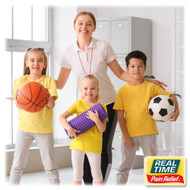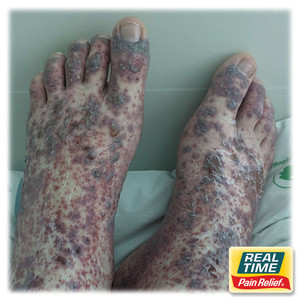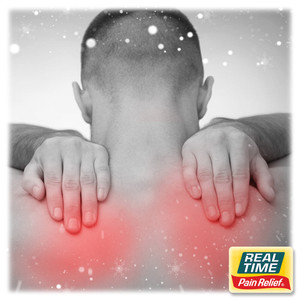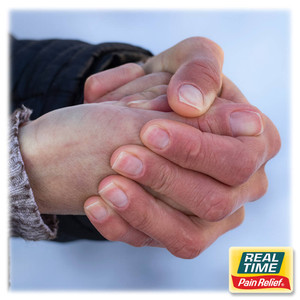After-School Sports & Strains: Managing Pain in Young Athletes
Posted by Dennis R Escalera on 27th Jul 2025
Introduction
From soccer fields and basketball courts to cross-country tracks and swimming lanes, millions of students across the U.S. participate in after-school sports. While physical activity has undeniable benefits—improved cardiovascular health, teamwork, and discipline—it also carries the risk of injury. Muscle strains, sprains, and joint pain are common, especially when young athletes push their limits.
This article explores the most frequent sports-related injuries among students, how to prevent them, and how topical pain relief lotions and creams made with nature’s ingredients may play a supportive role in pain relief and recovery.
Youth Sports Injuries by the Numbers
According to the Centers for Disease Control and Prevention (CDC), more than 2.6 million children aged 0 to 19 are treated in emergency departments each year for sports and recreation-related injuries.¹ While most injuries are not life-threatening, they can cause missed practices, missed school days, and, in some cases, long-term pain if not properly treated.
Common Injuries in School Sports
? 1. Sprains and Strains
- Sprains involve overstretched or torn ligaments (often the ankle or wrist).
- Strains involve muscle or tendon injuries, usually from overuse or sudden overstretching.
⚽ 2. Overuse Injuries
- These develop gradually due to repetitive stress. Examples include:
- Shin splints
- Tendonitis (e.g., Achilles, patellar)
- Stress fractures
? 3. Growth Plate Injuries
- Unique to children, these occur at the developing ends of long bones and must be treated carefully to avoid future deformity.
? 4. Contusions and Bruising
- Result from contact with equipment, the ground, or other players.
? 5. Knee Injuries
- ACL tears or meniscus injuries are more common in teens, especially in sports that involve pivoting and jumping.
Risk Factors for Injury
Young athletes may be more susceptible to injuries due to:
- Inadequate warm-ups or cool-downs
- Improper technique or form
- Playing year-round without rest
- Inappropriate equipment or footwear
- Training that doesn’t account for growth and development
Prevention Tips for Coaches, Parents, and Students
✅ 1. Encourage Proper Warm-Up and Cool-Down
Light aerobic activity followed by dynamic stretching before play, and static stretching after, can prepare muscles and prevent strain.
✅ 2. Use Correct Technique
Coaching proper posture, form, and movement is crucial—especially in sports like running, swimming, or gymnastics.
✅ 3. Promote Rest and Recovery
Include at least one rest day per week, and avoid overtraining. Sleep is also essential for muscle repair.
✅ 4. Use Protective Gear
Appropriate footwear, helmets, and padding reduce impact and minimize injury risk.
✅ 5. Recognize the Signs of Overuse
Persistent soreness, swelling, or pain after activity may signal overuse and should not be ignored.
Role of Topical Creams with Nature’s Ingredients
Even with proper precautions, soreness and strain are part of sports life. In these cases, topical pain relief creams and lotions formulated with nature’s ingredients may be a safe, fast-acting alternative to oral pain relievers.
These products can be applied directly to sore muscles or joints after practices, games, or workouts, and they may relieve discomfort and may reduce inflammation.
? Recommended Ingredients for Young Athletes:
- Arnica: Used widely for bruises and sprains. Its anti-inflammatory properties help reduce swelling and promote recovery.²
- Menthol: Provides immediate cooling relief to tired muscles.³
- Calendula: Calms irritated tissue and may promote healing.⁴
- Chamomile Extract: Offers natural soothing benefits for minor aches.
- Witch Hazel: May help reduce inflammation and support circulation.⁵
These ingredients are plant-based and often used in over-the-counter pain relief lotions designed to be non-toxic, non-greasy, and fast-absorbing—perfect for young athletes with sensitive skin or those who prefer natural remedies.
Application Tips for Best Results
- Apply to clean skin after activity
- Massage gently into affected areas (muscles, joints, bruises)
- Avoid applying to broken skin or near eyes
- Can be reapplied as needed per product instructions
When to Seek Medical Help
While soreness after sports is common, certain signs indicate a more serious issue:
- Persistent or worsening pain
- Swelling that does not decrease within 48 hours
- Pain that interferes with sleep or mobility
- Visible deformity or loss of function
Always consult a physician or sports medicine specialist for lingering or acute injuries.
Final Thoughts
Youth sports are an important part of development, but injury prevention and smart recovery are key to long-term health. By integrating ergonomic practices, rest, and topical pain relief solutions with nature’s ingredients, parents, coaches, and student-athletes may keep the game fun—and pain-free.
Simple habits like stretching, using proper gear, and applying a nature-based topical after activity may make a huge difference in recovery and performance.
? References:
- CDC – Sports and Recreation-Related Injuries
https://blogs.cdc.gov/nchs/2016/11/18/3325/ - Arnica Montana Key Benefits -
https://realtimepainrelief.com/arnica-montana/ - Menthol Key Benefits -
https://realtimepainrelief.com/menthol/ - Calendula Key Benefits -
https://realtimepainrelief.com/calendula-officinalis-extract/ - Witch Hazel Key Benefits -
https://realtimepainrelief.com/witch-hazel/ - Chamomile Extract Benefits
https://realtimepainrelief.com/german-chamomile/





